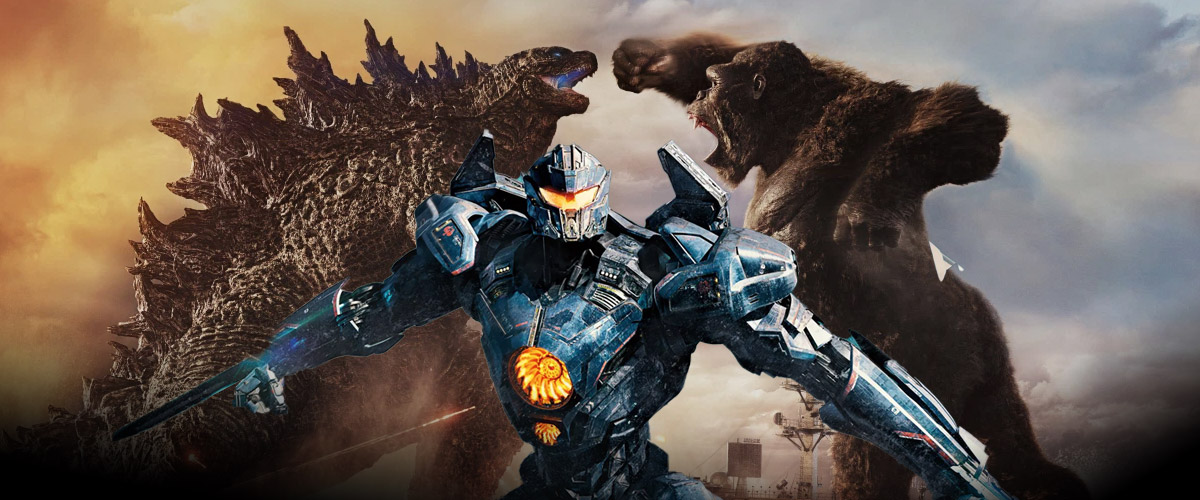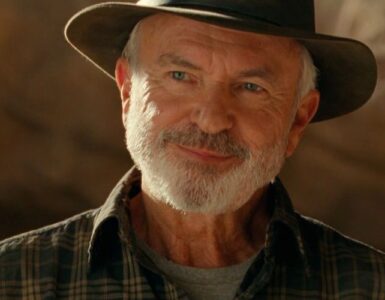In the wake of Godzilla Minus One obliterating box-office records with the biggest IMAX opening ever in Japan, at an impressive US$1.2 million across 49 IMAX screens throughout the country, there’s no denying that the Japanese loves their kaijus, especially when the creatures are stomping through pop culture like the King of Monsters on a city-wide bender.
This cinematic extravaganza has everyone buzzing about Monarch: Legacy of Monsters, the latest streaming series that’s supposed to be more thrilling than a kaiju-sized roller coaster. Available on Apple TV+, the series is set in Warner Discovery’s MonsterVerse movie franchise, and takes place after the clash between Godzilla and the Titans. The series addresses the reality of monsters and follows one family’s quest to unearth hidden secrets, revealing a legacy intricately tied to the franchise’s Monarch organisation.
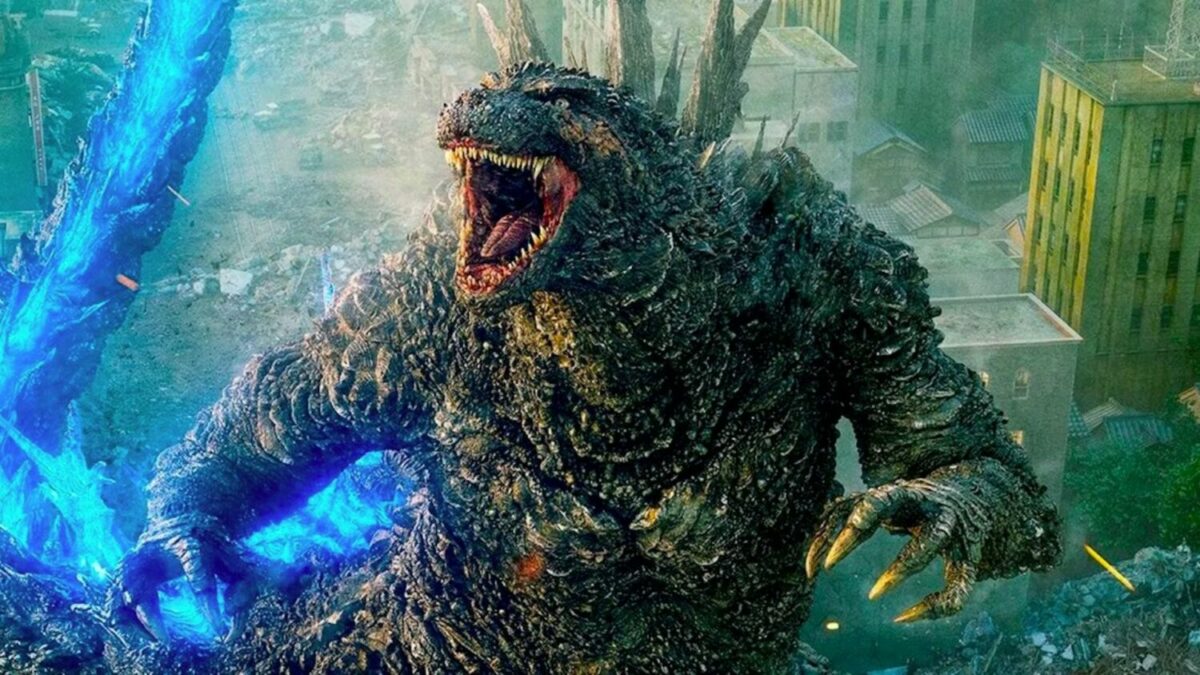
But for those not yet fluent in kaiju-speak, here is a short crash course.
“Kaiju” is a term that transforms ordinary creatures into city-stomping, skyscraper-crushing behemoths in the world of Japanese cinema. Picture this: massive monsters, from the iconic Godzilla, to the more obscure yet equally colossal counterparts, going toe-to-toe in epic battles while levelling entire cityscapes. It’s not just about jaw-dropping special effects and mind-blowing CGI (although, let’s be real, that’s a big part of it); it’s a cinematic poem to the collective fascination with the monstrous and the fantastical.
The genre has long since crossed borders (some say across the Pacific Rim), captivating a global audience with its celebration of larger-than-life creatures, metaphorical storytelling, and the unbridled joy of watching things go kaboom on an epic scale.
So, to all those who love a good dose of monster chaos, here is a list of the top 10 kaiju movies that would have you cheering for more destruction.
1. Godzilla (1954)
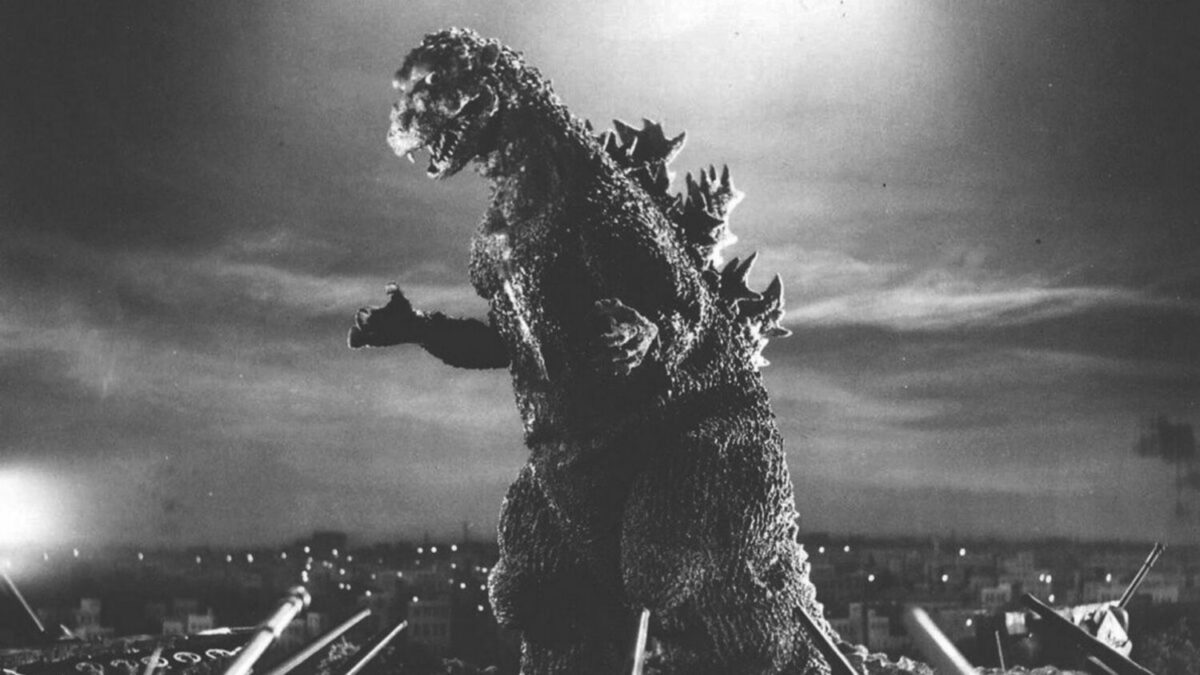
Regarded as the pioneer of kaiju films, the original Godzilla directed by Ishirō Honda (Mothra, Rodan) is hailed as the quintessential kaiju movie. This iconic film not only introduced the world to the concept of a giant radioactive monster wreaking havoc on Tokyo, but also served as a powerful metaphor for the consequences of nuclear weapons.
The film’s dark and sombre tone, coupled with Akira Ifukube’s haunting score, creates a sense of dread that has resonated for decades. Godzilla’s emergence from the ocean and his destructive path through the city remain cinematic landmarks, making this film a timeless classic in the kaiju genre.
2. Cloverfield (2008)
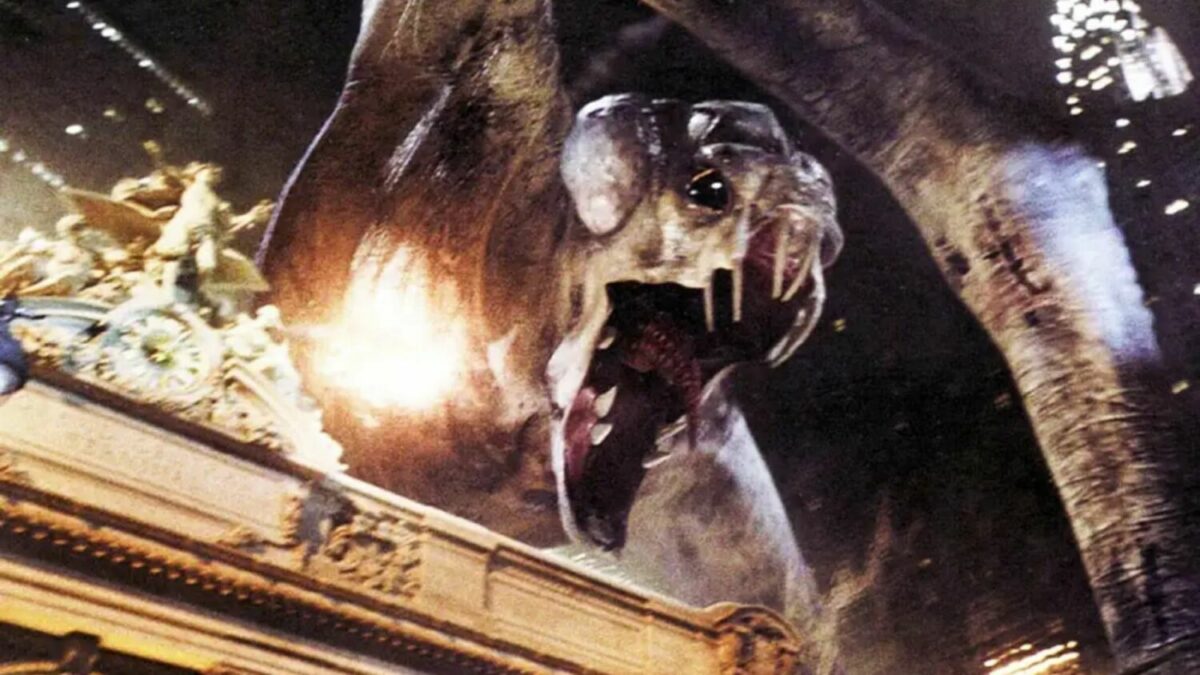
Cloverfield takes a unique approach to the kaiju genre by presenting the monster’s rampage through the lens of a found footage-style narrative, the first of its kind. Directed by Matt Reeves (The Batman, Let Me In) and produced by J.J. Abrams (Star Trek, Star Wars: The Last Jedi), this film adds a fresh perspective to the genre, immersing the audience in the chaos and fear experienced by the characters on the ground as if they were right there with them.
The mystery surrounding the creature’s origin and the unconventional storytelling make Cloverfield a standout kaiju movie. Its realistic portrayal of the human response to a colossal threat and the use of handheld cameras to capture the action contribute to its status as a groundbreaking and suspenseful entry in the kaiju genre.
3. Kong: Skull Island (2017)
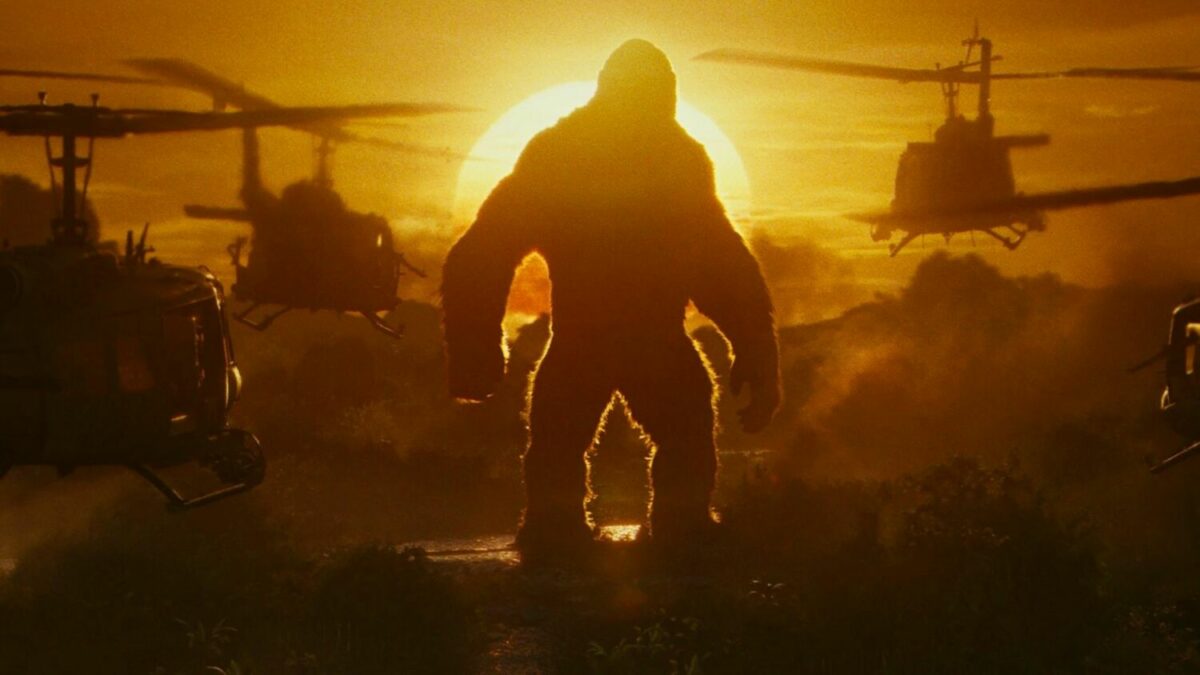
The second film in the MonsterVerse universe, after 2014’s Godzilla, Kong: Skull Island reinvigorates the kaiju genre by placing the iconic giant ape, King Kong, in a visually stunning and action-packed setting. Directed by Jordan Vogt-Roberts (Cocked, The Kings of Summer), the film is a perfect meld of creature design, world-building, and epic battles.
The film’s commitment to exploring the mysterious Skull Island and its diverse ecosystem, coupled with Kong’s heroic portrayal as the protector of the island, adds depth to the narrative, cementing the film as more than just a monster going on a mindless rampage. An animated spin-off, Skull Island, is even available on Netflix for fans who want to unravel all the secrets of Kong’s home.
With a talented ensemble cast, with the likes of Tom Hiddleston (Loki, Thor: Ragnarok) and Brie Larson (The Marvels, Room), and state-of-the-art special effects, Kong: Skull Island successfully modernises the Kong mythos, solidifying its place as one of the best kaiju movies.
4. Godzilla (2014)

The king that started the genre, in a Western reboot that birthed the MonsterVerse, Gareth Edwards’ (The Creator, Rogue One: A Star Wars Story) Godzilla brings the iconic monster back to its roots while incorporating cutting-edge special effects. This film strikes a balance between human drama, with an impressive performance by Aaron Taylor-Johnson (Kick-Ass, Avengers: Age of Ultron) and Elizabeth Olsen (WandaVision, Avengers: Endgame), and kaiju action, offering a gripping narrative and awe-inspiring monster battles.
Godzilla’s design pays homage to the original while introducing a more realistic and imposing creature. Edwards, in an interview with ShockTillYouDrop, emphasised that he wanted Godzilla to be more than just a monster.
“He’s not like King Kong where there’s a personality. Godzilla is definitely a representation of the wrath of nature.”
The slow reveal of Godzilla and the strategic use of his appearances build anticipation and showcase the grandeur of the kaiju. With its meticulous pacing and a sense of scale that truly captures the magnitude of Godzilla, this film stands out as a remarkable entry in the kaiju genre.
5. Pacific Rim (2013)
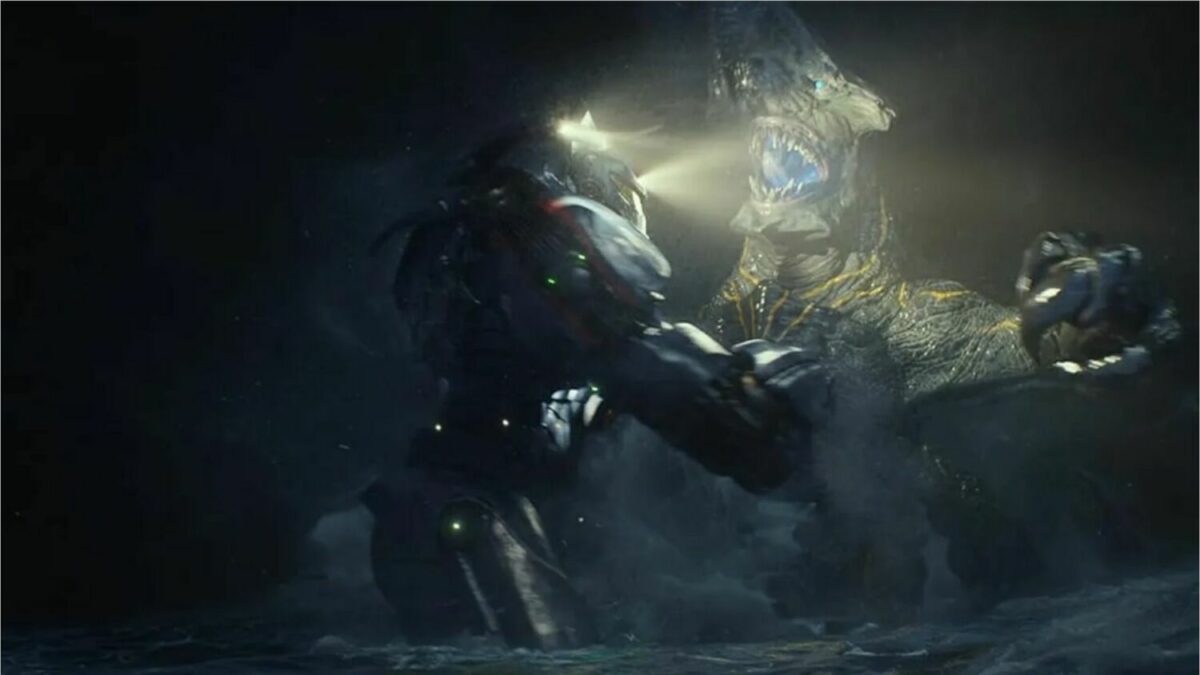
Huge robots clashing with even bigger monsters have always been a fan-favourite. Directed by Guillermo del Toro (Hell Boy, Crimson Peak), Pacific Rim takes the kaiju genre to new heights by introducing gigantic human-piloted robots, known as Jaegers, in a desperate battle against colossal sea monsters aptly named, ‘Kaijus’. The film’s imaginative world-building, intricate Jaeger and kaiju designs, and expertly choreographed action sequences, of both the Jaegers and the humans piloting them, make it a captivating watch in the genre.
Del Toro’s unique visual style and commitment to creating a rich mythology around the kaiju and Jaegers contribute to the film’s epic scale and emotional resonance, with Idris Elba’s (The Suicide Squad, Fast & Furious Presents: Hobbs & Shaw) performance at the end bringing many to tears. Pacific Rim is a love letter to classic mecha and kaiju stories, combining nostalgia with groundbreaking visuals to deliver an exhilarating cinematic experience.
Our advice is to watch this, and skip the terrible sequel.
6. The Host (2006)
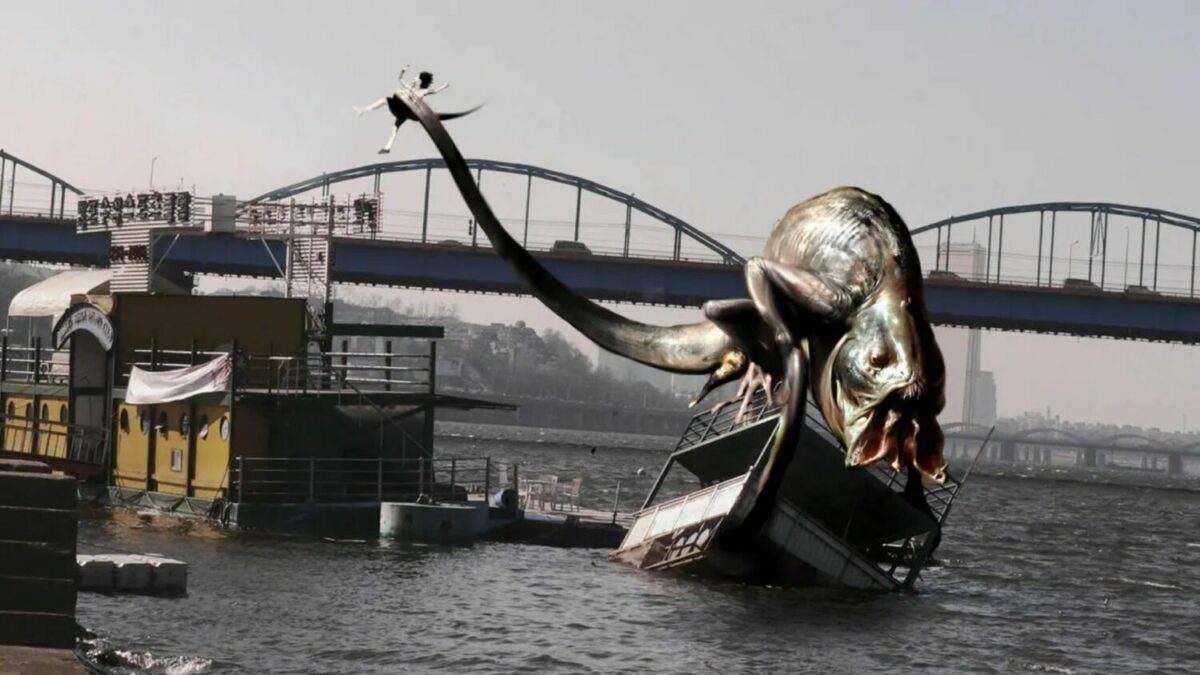
Inspired in part by a 2000 incident, Bong Joon-ho‘s (Parasite, Snowpiercer) The Host draws from a report by a Korean mortician in Seoul working for the U.S. military, who claimed he was instructed to dispose of a significant quantity of formaldehyde down the drain.
Introducing a mutated monster, spawned from toxic waste in the Han River, terrorising Seoul, the film defies traditional kaiju conventions by blending genres, seamlessly incorporating elements of family drama, dark comedy, and political commentary.
The Host stands out for its well-developed characters, sharp social commentary, and the emotional depth brought to the kaiju narrative. Bong’s masterful direction, coupled with groundbreaking CGI (for its time at least), elevates the film beyond a mere creature feature, making it a thought-provoking and genre-defying entry in the kaiju canon.
7. Shin Godzilla (2016)
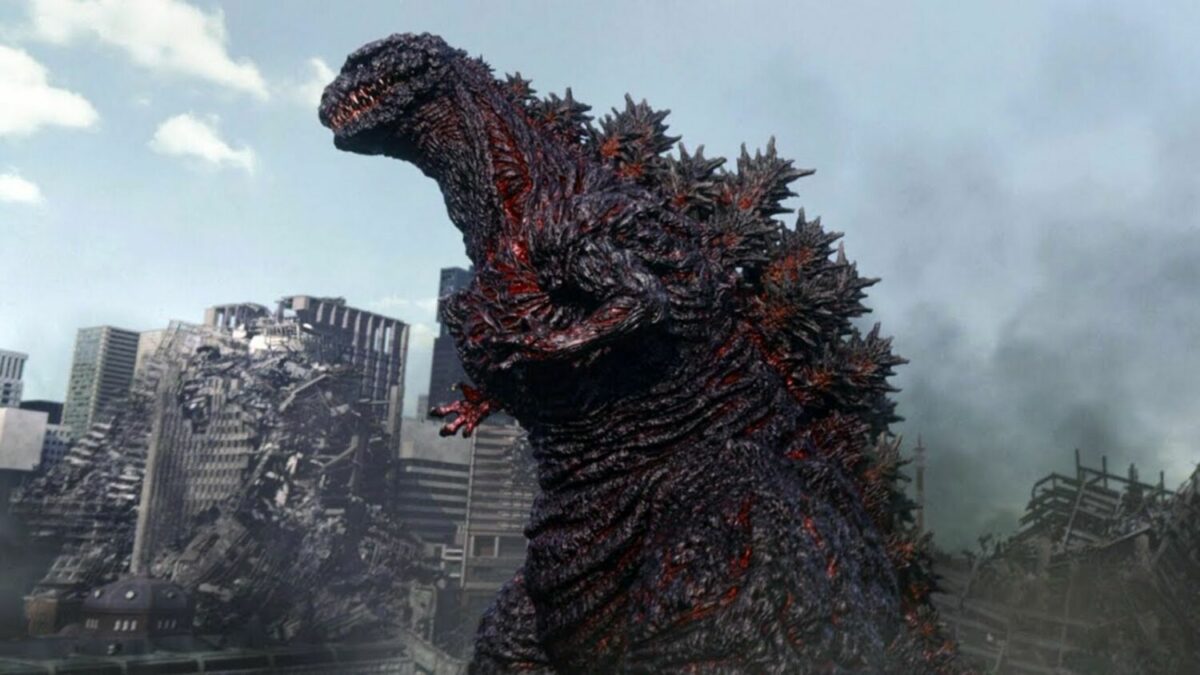
Directed by Hideaki Anno (Shin Karmen Rider, Shin Ultraman) and Shinji Higuchi (Attack on Titan, The Floating Castle), Shin Godzilla provides a unique and contemporary take on the iconic monster while still reminding the audience of the King of Monsters’ roots as a metaphor for nuclear destruction.
One of the things Anno and Higuichi changed to highlight that fact was Godzilla’s atomic breath, making it utterly destructive and chaotic instead of the controlled stream that previous films had depicted.
The meticulous and terrifying evolution of Godzilla, coupled with the film’s social and political commentary, distinguishes Shin Godzilla as a standout entry. The use of practical effects and innovative storytelling techniques contributes to the film’s impact, solidifying its status as a modern classic in the kaiju genre.
8. Destroy All Monsters (1968)

As a part of Toho’s Godzilla franchise, Destroy All Monsters is a monumental kaiju crossover directed by Ishirō Honda. Bringing together various iconic monsters, including Godzilla, Mothra, and Rodan, the film is a fan’s dream with its epic monster battles.
The magnitude of the monster chaos can be attributed to Honda, who in his final interview with Cult Movies magazine, decided it would be much better, pacing-wise, for all the monsters to appear together at the same time rather than be individually introduced.
“Mr. Kimura and I were confined to write Destroy All Monsters together, and we agreed how nonsensical it’d be to have each monster appear one after the other. So we came up with the marine ranch scenario—which scientifically would now be called aquaculture—and asked what’d happen if that got developed on a super scale? We decided to put all of the monsters in one place, where they are scientifically “raised.”
The global scale of the kaiju mayhem and the collaborative effort required to defeat a common threat sets Destroy All Monsters apart. With its extensive roster of monsters, such as Godzilla and Manda, and groundbreaking special effects (for the 1960s), this film remains a beloved classic among kaiju enthusiasts.
9. The War of the Gargantuans (1966)

Directed once again by Ishirō Honda, The War of the Gargantuans presents a unique twist on the kaiju formula by introducing humanoid monsters with distinct personalities. The film explores the relationship between two Gargantuans, Sanda and Gaira, one who is gentle, and one who would rather stomp on humans, and their impact on human civilization.
Honda’s directorial finesse elevates the narrative, infusing each monster encounter with a sense of gravitas and emotional depth rarely seen in traditional kaiju films. The nuanced portrayal of Sanda and Gaira adds layers to their characters, making them more than mere destructive forces. From the intricate design of the Gargantuans to the awe-inspiring action sequences, every frame is a testament to the film’s commitment to delivering a captivating cinematic experience.
10. Gamera Heisei Trilogy (1995 – 1999)
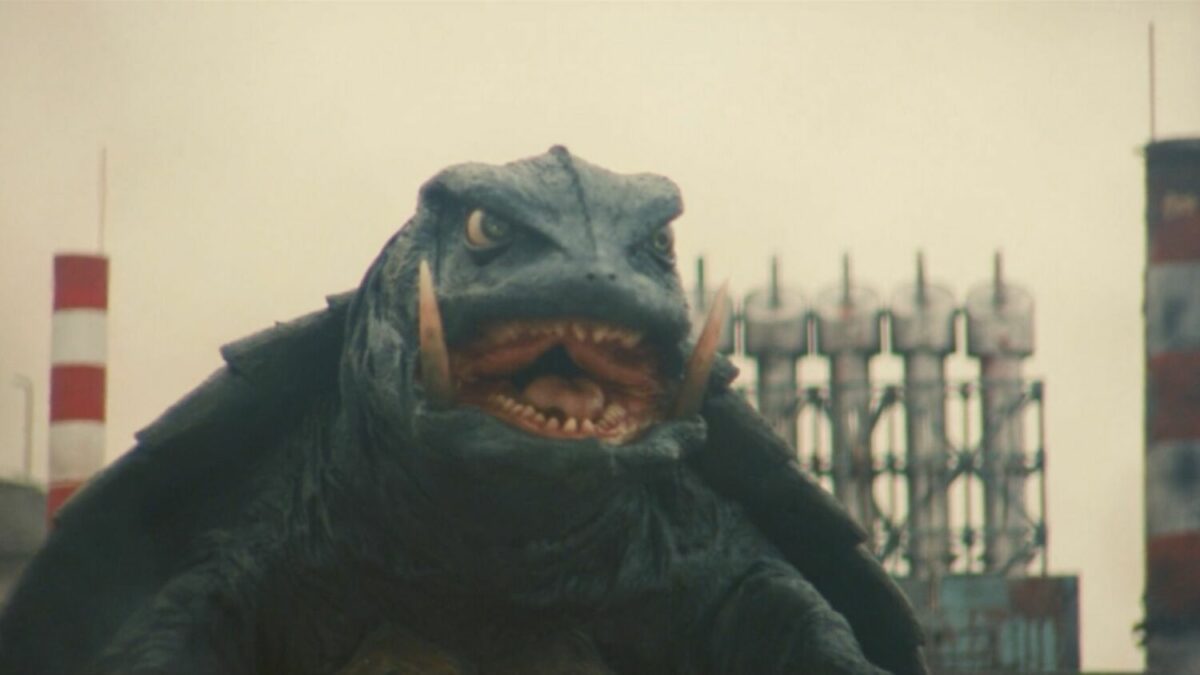
The Gamera Heisei Trilogy, consisting of Gamera: Guardian of the Universe (1995), Gamera 2: Attack of Legion (1996), and Gamera 3: Revenge of Iris (1999), revitalises the Gamera franchise with a darker and more mature tone. Directed by Shusuke Kaneko (Death Note, Danger Dolls), the trilogy introduces a redesigned Gamera as a guardian of Earth facing formidable kaiju threats.
The films are praised for their engaging characters, intricate plotlines, and impressive special effects. Kaneko’s direction and the trilogy’s commitment to character development set a new standard for kaiju films, making Gamera a respected and complex figure in the genre.
Bonus: The Beast from 20,000 Fathoms (1953)
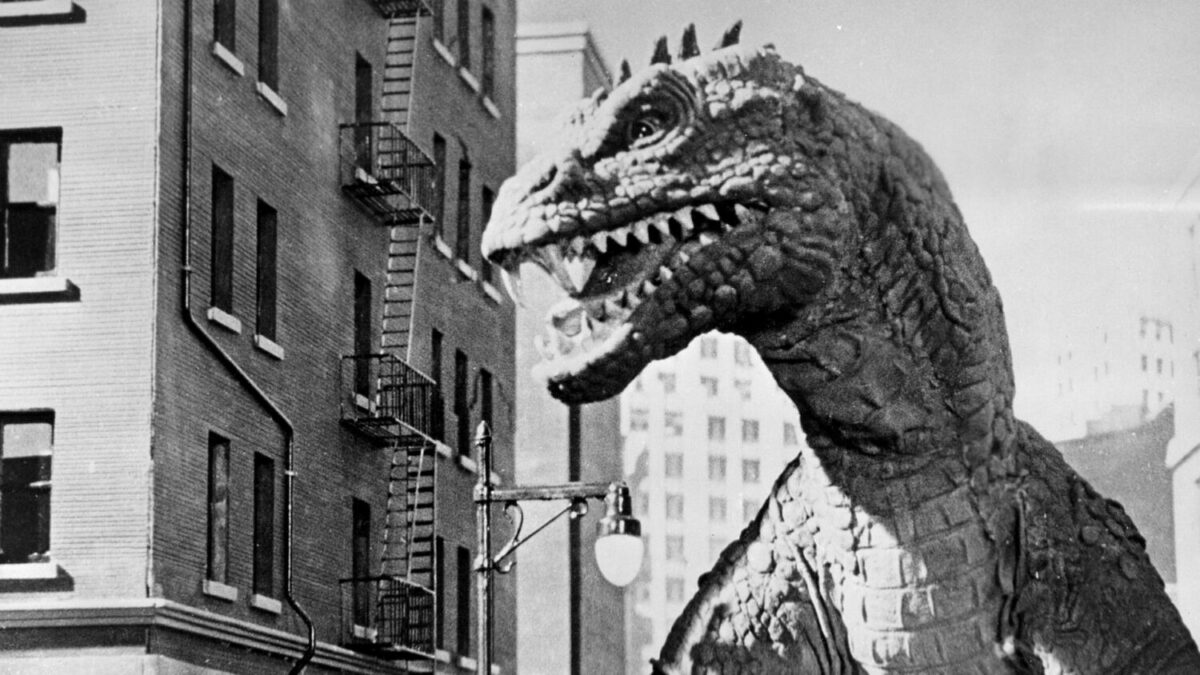
American sci-fi monster film The Beast from 20,000 Fathoms holds a special place in the history of kaiju cinema as a direct influence on the creation of Godzilla. Directed by Eugène Lourié (Gorgo, The Giant Behemoth), this film features a prehistoric monster awakened by nuclear testing, setting the stage for the emergence of giant creatures as metaphors for nuclear fears. Ray Harryhausen’s (Clash of The Titans, The 7th Voyage of Sinbad) groundbreaking stop-motion effects in bringing the titular creature to life left an indelible mark on the genre.
The success of The Beast from 20,000 Fathoms paved the way for Godzilla (1954), directed by Ishirō Honda, which drew inspiration from the themes of nuclear devastation and the awe-inspiring spectacle of a giant monster.
In a domino effect, Godzilla, in turn, became a cultural phenomenon, influencing countless kaiju movies across various mediums and cultures. The success and enduring legacy of The Beast from 20,000 Fathoms played a crucial role in establishing the kaiju genre, transcending borders and mediums. Whether in Japanese, Western, or Korean cinema, and whether through animated or live-action formats, the impact of The Beast from 20,000 Fathoms on the kaiju genre remains undeniable, making it a pioneering work that laid the foundation for the diverse and expansive world of giant monster films.
Whether you’re delving into the roots of kaiju with The Beast from 20,000 Fathoms or embracing the contemporary twists of Pacific Rim, these films provide a kaleidoscope of imagination, inviting all to witness the epic battles and larger-than-life narratives that define the kaiju cinematic universe.
So, grab your popcorn, and dive into the world of colossal creatures—an adventure that promises unbridled excitement and a geeky celebration of the monstrous and fantastical.

